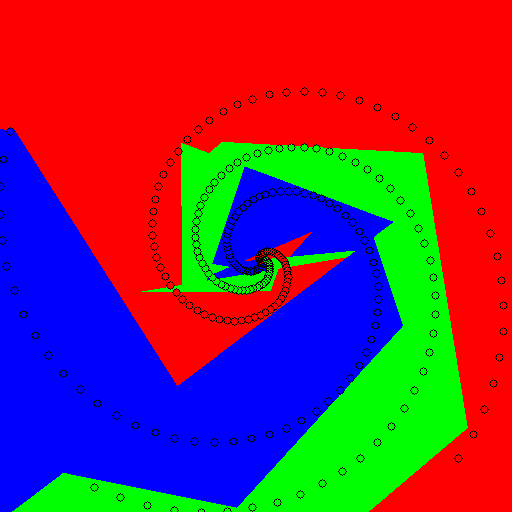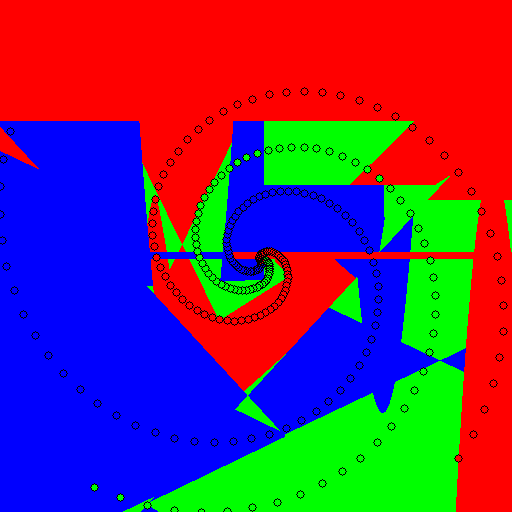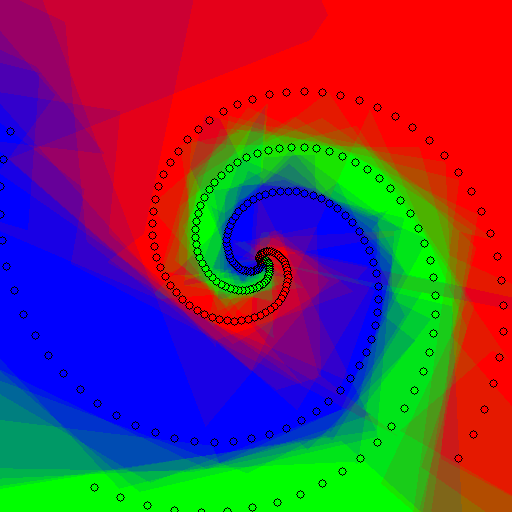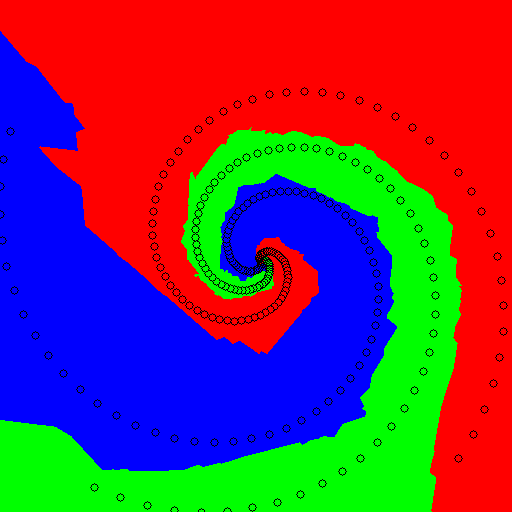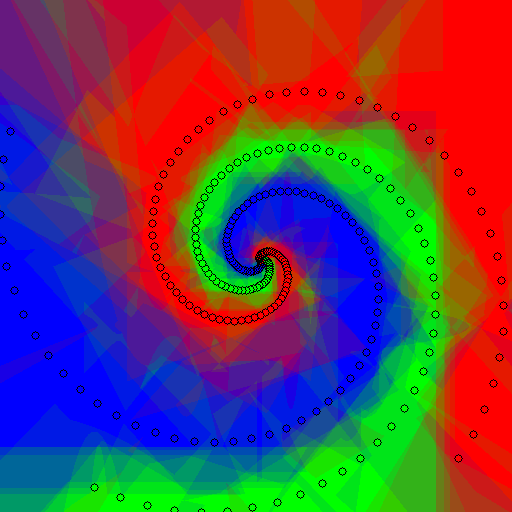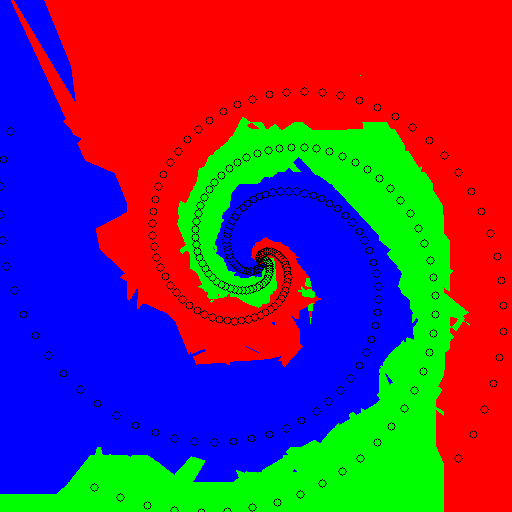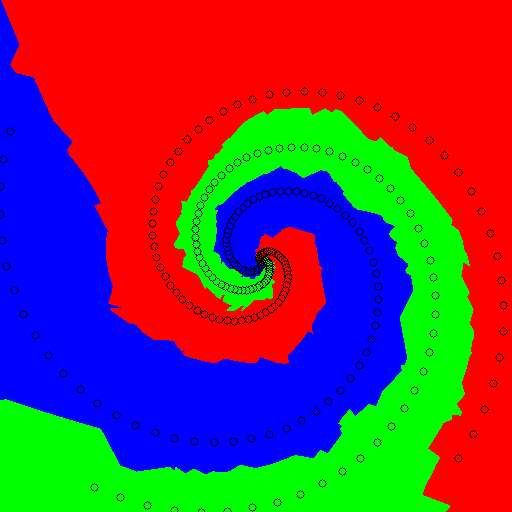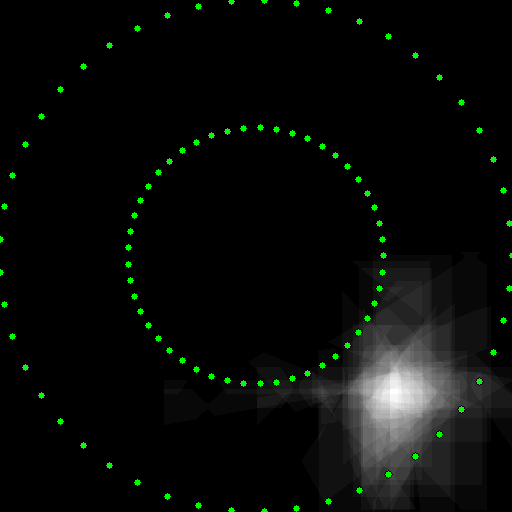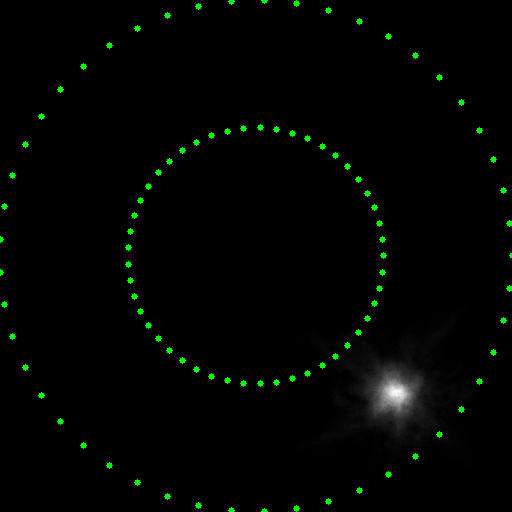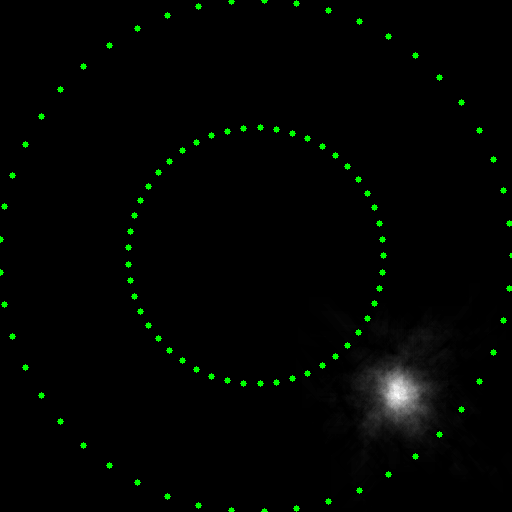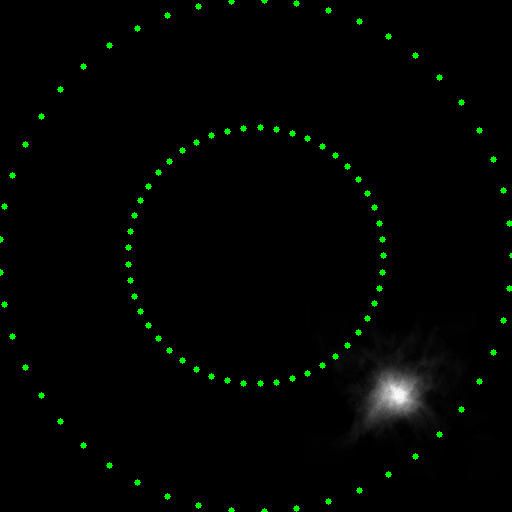This module is a basic implementation of Random Forests which allows users to define their own weak learners (the tests performed at each node). It was written as a prototype for a C++ version with templates. It is slow, but pure Python and easy to play with. People looking for a Python Random Forest usable in real problems should start with scikit-learn.
It is written for Python 3.
These examples train on three spiral (without noise) and predict the whole plane. They try 4 different weak learners: axis aligned, linear, conic and parabolas.
python example_classification.py
Using one single tree:
Using a forest of 10 trees, with soft or hard decision boundaries:
These examples train on two circles and predict the center of the bottom right quadrant (predicting the center of the image would be too easy!). They try 4 different weak learners: axis aligned, linear, conic and parabolas.
python example_regression.py
Using one single tree:
Using a forest of 10 trees
A. Criminisi, J. Shotton, and E. Konukoglu, "Decision Forests for Classification,
Regression, Density Estimation, Manifold Learning and Semi-Supervised Learning",
no. MSR-TR-2011-114, 28 October 2011.
http://research.microsoft.com/en-us/projects/decisionforests/

